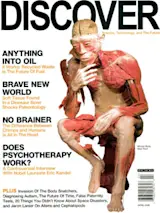It's been a hundred years since an earthquake and fire destroyed nearly all of San Francisco, but scientists today are still using that earthquake to better understand how to predict future tremors.
With the help of computer models the researchers are using what they know about the 1906 quake as a test for a relatively new approach to earthquake forecasting. One such model has been developed by John Rundle, Director of Computational Science and Engineering at the University of California at Davis. The model, which he calls "Virtual California," takes the information gathered from field research about earthquakes and plugs it into a complex mathematical formula that only a supercomputer can crunch. Then it can be used, according to Rundle, "to produce arbitrarily long simulated histories of earthquakes on into the future."
If that all sounds a bit familiar, that's because it's roughly the same process used to forecast the ...







